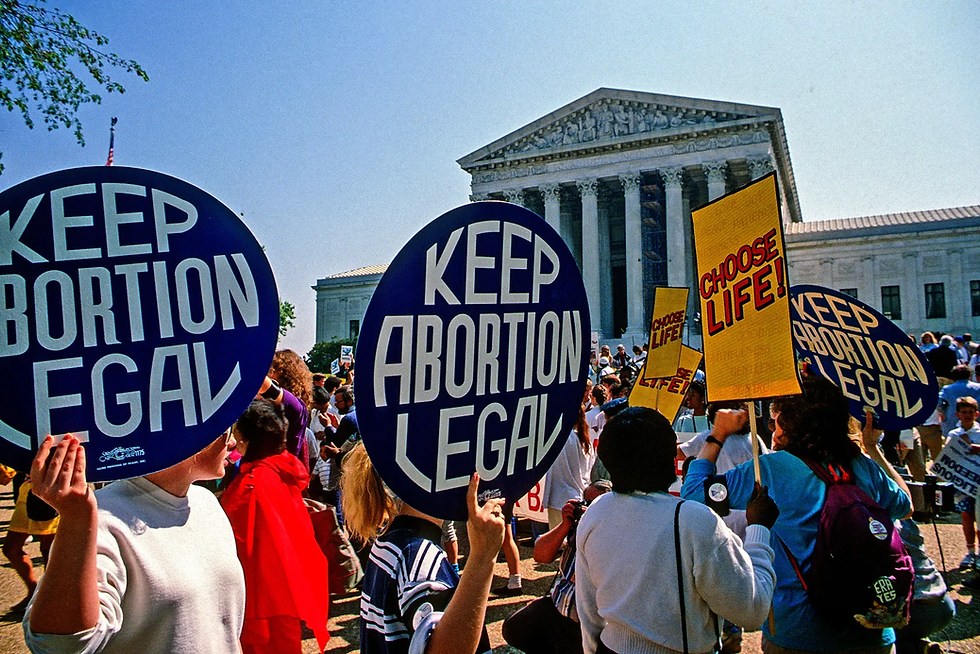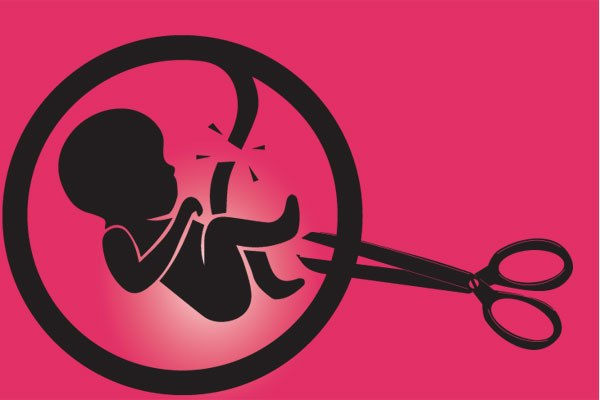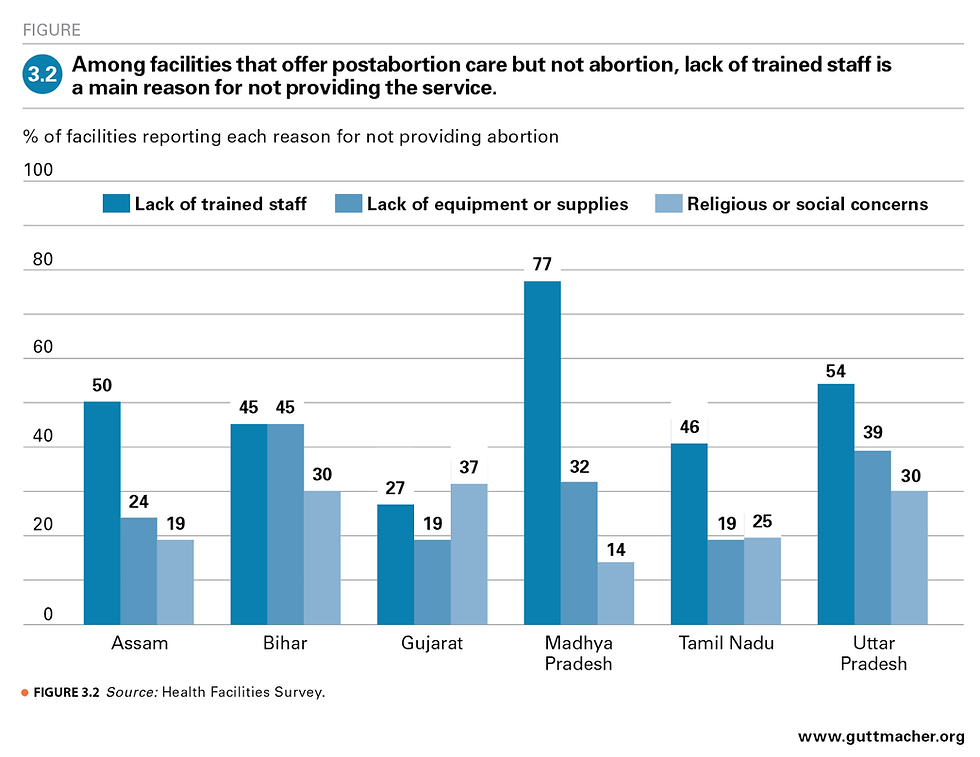The upturning of the Roe vs. Wade Judgment by the US Supreme Court has spread a wave of debates on women's rights and laws, while many of us are actively conversing and posting stories about this, practically how many of us are aware of the abortion rights granted and practised in our country?
This article contains a gist of all abortion laws, rights and acts that you need to know!
Current Context - Roe vs Wade Case
In 1969, Norma McCorvey "Jane Roe", challenged the criminal abortion laws in Texas. The state forbade abortion as unconstitutional, except in cases where the mother's life was in danger. She was pregnant with her third child when she filed the case, and claimed that she had been raped, but the case was rejected and she was forced to give birth.
In 1973 her appeal made it to the US Supreme Court, where she argued that abortion laws in Texas and Georgia went against the US Constitution because they infringed a woman's right to privacy.
The court justices ruled that governments lacked the power to prohibit abortions and held up that a woman's right to terminate her pregnancy was protected by the US constitution. Roe v Wade also established that in the final trimester, a woman can obtain an abortion despite any legal ban only if doctors certify it is necessary to save her life or health.
Roe v. Wade was overturned by the Supreme Court on 24 June 2022 which means Individual US states are now able to ban the procedure again. Thirteen have already passed ‘trigger laws’ that will automatically outlaw abortion following the Supreme Court's ruling.

The Indian Landscape
Historical Background

Before 1971, abortion was criminalized under Section 312 of the Indian Penal Code, 1860, describing it as intentionally "causing miscarriage". It was a punishable offence and criminalised women/providers facing 3 years in prison and/or a fine, and the woman availing of the service facing seven years in prison and/or a fine.
Due to the increased incidence of abortions in the 1960s, the MoHFW appointed a Shah Committee to come up with suggestions for the draft of abortion law in India.
The Committee in 1966 recommended legalizing abortion in its report to prevent wastage of women's health and lives on both compassionate and medical grounds.
The MTP Act, 1971
Can a pregnant woman get an abortion legally in India?
Yes, Abortion is legal in India under the aforementioned law.
The Medical Termination of Pregnancy Act provides the legal framework for making CAC services available in India. It was enacted in 1971, mainly as a means to control the population. Then came the various parameters of who can undergo an abortion, where and so on.

The Parameters for the same are as follows -
Who can opt for an abortion?
When the continuation of pregnancy is a risk to the life of a pregnant woman or could cause grave injury to her physical or mental health;
When there is a substantial risk that the child, if born or dead would be seriously handicapped due to physical or mental abnormalities;
When pregnancy is caused due to rape (presumed to cause grave injury to the mental health of the woman);
When pregnancy is caused due to failure of contraceptives used by a married woman or her husband (presumed to constitute a grave injury to the mental health of the woman).
When the socio-economic condition of the family is poor and the couple already has 2–3 children

How can you get an abortion?
The termination can take place either in a govt: hospital or one approved by a District Level Committee by an RMP (Registered Medical Practitioner) only.
There are three prescribed methods Including the oral method, the suction method and the Dilation and evacuation (D&E) method depending on the time frame of the pregnancy.
2021 Amendment - When can you get an abortion?
Married clause dropped - The MTP Act earlier permitted termination of the pregnancy by only a married woman in the case of contraceptive method or device failure. Now; unmarried women can now seek safe abortion services on grounds of contraceptive failure.
Increase in gestation limit - Under the Act, originally the time limit for terminating the pregnancy was up to 12 weeks on the advice of one doctor and up to 20 weeks on the advice of two doctors. Moreover, post 20 weeks terminating pregnancy was not permitted. Now; all women can terminate pregnancy up to 20 weeks on the advice of one doctor and special categories of women (survivors of sexual abuse, minors, victims of rape, incest, disabled women) can seek termination up to 24 weeks. Moreover, women/couples can seek termination of pregnancy, anytime during the gestation period for foetal anomalies, as diagnosed by the Medical Boards.
Medical Boards - The amendments mandate the constitution of Medical Boards in all the states and UTs for diagnosing substantial foetal anomalies. The Board will decide if the pregnancy may be terminated after 24 weeks and each board will have a gynaecologist, radiologist/sonologist, paediatrician and other members notified by the government.
Confidentiality - A registered medical practitioner may only reveal the details of a woman whose pregnancy has been terminated to a person authorised by law. Violation is punishable with imprisonment of up to a year, a fine, or both.

The Glitch
According to a 2015 Lancet Study (the first study designed to measure the national incidence of abortion in India), out of the 15 million abortions that happened in India, only 3.4 million abortions were conducted in legally approved health facilities, and 0.8 million abortions occurred through unsafe methods.

A United Nations Population Fund (UNFPA)'s State of the World Population Report 2022 stated that about 67% of abortions in India are unsafe.
It also said that 8 women die each day due to unsafe abortions, which were the third most common cause of maternal mortality in the nation.
Why are Indian women seeking unsafe/illegal abortions?
Inborn Stigma: "In a highly patriarchal society, women find it difficult to access abortion. Healthcare providers often ask women to get the permission of their husbands, or family members, even though it is not required by law. Often, the privacy and confidentiality of the woman are not protected."Marginalized women, such as sex workers, HIV-positive women, tribal women, single women, and youths find it even more difficult to access abortion. And a lack of access is what leads to unsafe abortions” said Kajal Jain; a social worker.
Lack of geographical access: About 66% of India's population lives in rural parts of the country, where there is a severe shortage of obstetrician-gynaecologists, according to the Indian health ministry's 2019-20 Rural Health Statistics Report. As a result, many abortions are often performed by midwives, auxiliary nurses, or birth attendants and are, therefore, considered unsafe.
The prevalence of illegal sex determination followed by sex-selective female foeticide increasingly causes the administration to remain on the rigid side of the law.
Among facilities that offer postabortion care but not abortion, lack of trained staff is the main reason for not providing the service.

All over the world, the lack of reproductive justice obstructs women's rights and impacts their bodily autonomy. Even privileged women may find it difficult to access safe abortion and it's far worse for women with no wealth, class, or caste capital. Non-cis people are deprived of reproductive rights the world over.
What could be better?
As advantageous as the law sounds on paper, it is expected to be helping only if implemented properly.
The MTP Act, which comes from a legal standpoint, needs to be more women-centric. It needs to recognize abortion as a genuine reproductive need, and not punish women.’’ as mentioned by Ms Jain
Students should be given a comprehensive sexual education in school regarding reproductive rights, pregnancy, abortion, etc.
For rural women or other uneducated strata of society, special workshops could be helpful to create awareness
Infrastructural development in the direction of more accessible hospitals and dispensaries should be looked forward to.
Lastly, as empowered and educated youth, it becomes our responsibility to spread awareness by talking about such issues in our country as well, by trying to root out the internalised stigmas attached to women and their sexual rights as well as choices.
Somya Maan
Sources: Gazette of India, MoHFW, Indian Express, BBC

Comments